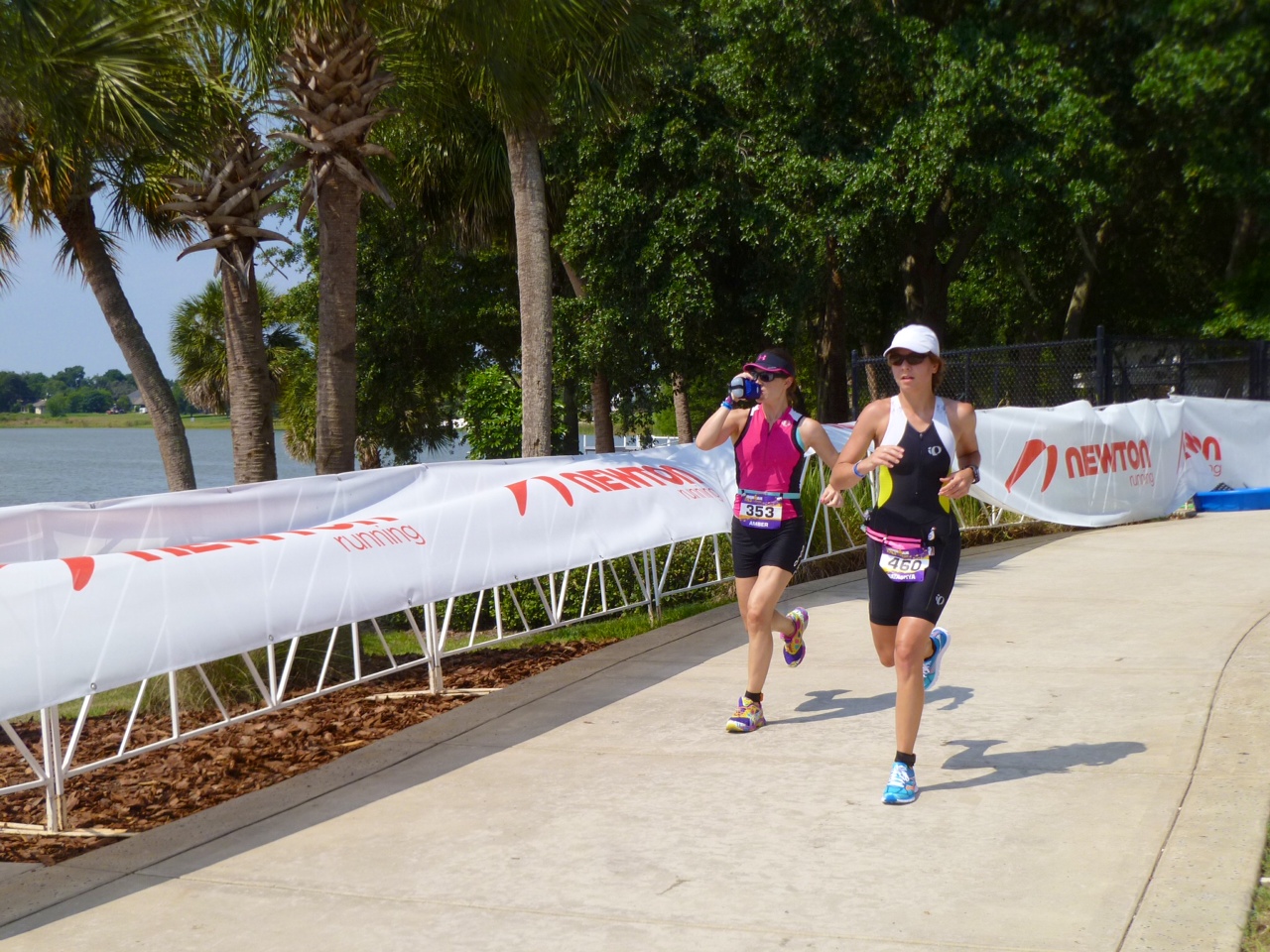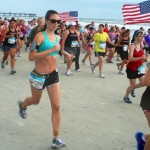You’ve conquered 26.2, now it’s time to train for a tri. Amber, our triathlon blogger explains how she made the transition and spills need-to-know tips so you can, too!
So you’ve run 26.2 miles. Now what? That was the exact question I asked myself when it was time to find a new challenge. The answer was triathlon. I figured that since my body was already conditioned for endurance, I should have no problem transitioning to triathlon (no pun intended). However, being a strong runner didn’t necessarily mean I picked up the other two sports with ease. Here are three tips for each leg of the triathlon to keep in mind as you blossom from marathoner to triathlete.
1. When a runner gets in the water, it is natural for them to kick from the knee like they are still running. Additionally, runners in the water typically rely on their strong kick to get them from point A to point B, and let their upper body ride the coattails of the powerful kick. These two techniques result in an inefficient swim. First, your kick should stem from your hips in the water. Relax your knees, engage your core, point your toes, and concentrate on driving the kick from the hips. The swim leg is a great time to warm up your legs, not burn them out. Once out of the water, your arms won’t be contributing much to the rest of the race- so use them up. Training in the pool with a pull buoy between your knees is a great way to build arm and shoulder strength, and to get used to the feeling of having your arms pull your weight in the water.
2. If you identify yourself as a runner, your strongest leg of triathlon will probably be the run. Based on personal experience and conversations with other triathletes, running does not translate to biking. While this isn’t true for everyone, it is something to keep in mind if you experience difficulty when you first get on a bike. Typically, runners are strongest in the back of the legs (hamstrings and calves.) Biking requires strong quadriceps, which is something most runners need to build on. Don’t be surprised if you experience early onset fatigue in the quadriceps when you first begin to ride. Be patient, spend more time in the saddle, and even engage in cross-training to build your biking legs. I have also found that runners have a tendency to point their toes while riding the bike. This is an inefficient way of riding, as that position puts your calves as the hardest working muscle propelling the bike. As a new biker, pay close attention to your form, and make sure you are riding with your foot flat on the pedal.
3. If you’re anything like me, you’ll be itching to get off the bike and start the run. No matter how much I personally improve on the bike, people blow by me like I’m sitting still at every race, for the entire portion of the bike leg. Very rarely do I get the pleasure of passing someone who doesn’t pass me again within five seconds. As a marathoner, the run is your time to shine. Most triathletes have incredibly strong bike legs, but then walk-run the run portion. As a natural runner, you will quickly fall into your pace and remain steady until you cross the finish line. However, just like any other race, pacing is everything. You will have bike legs when you first start the run during a race, which means your legs are used to turning over at a high cadence. Because of this, you are almost 100% guaranteed to go out way faster than your goal pace without even realizing it. If you have a GPS watch, pay close attention to your pace during the first mile. Just like the marathon, start out slower than your goal pace during the first half of the race, then try to aim for negative splits during the second half of the race after you have found your rhythm. If you can achieve proper pacing, you will enjoy a strong run picking off all the bikers that passed you all the way until you cross that finish line.



